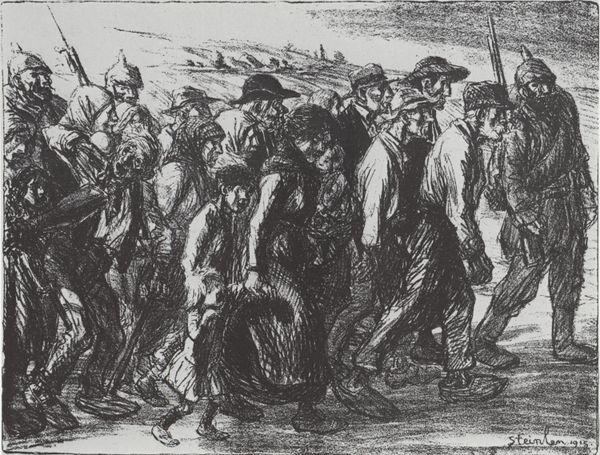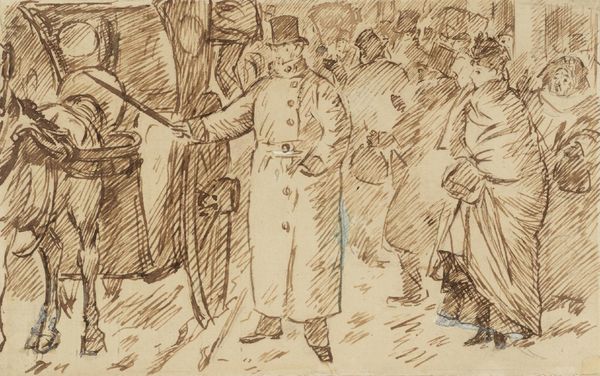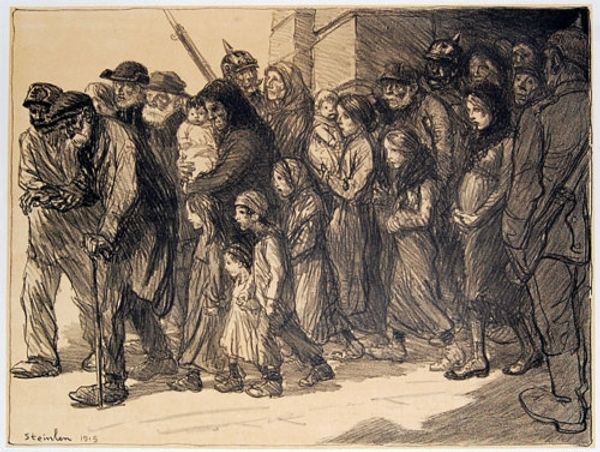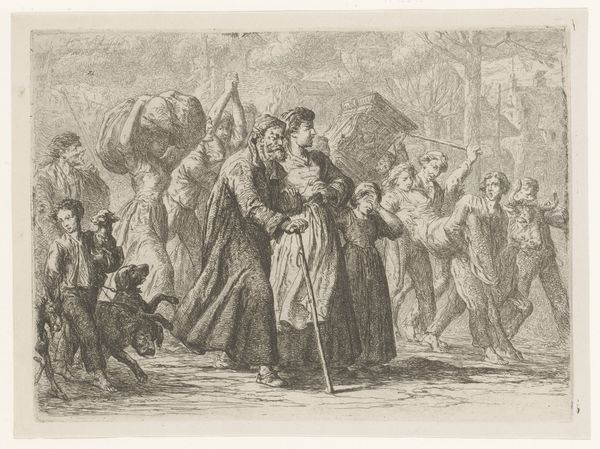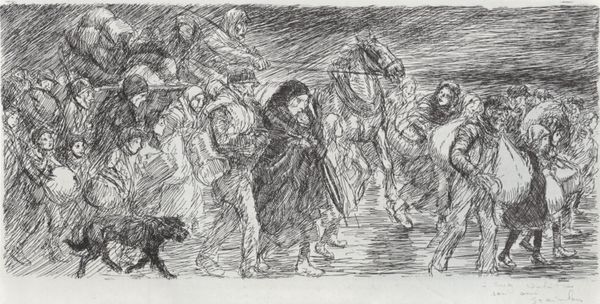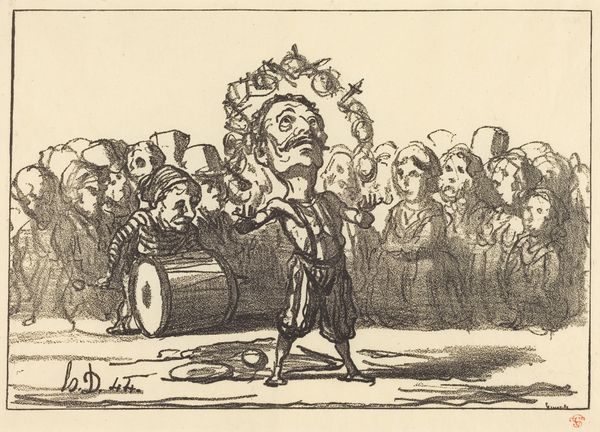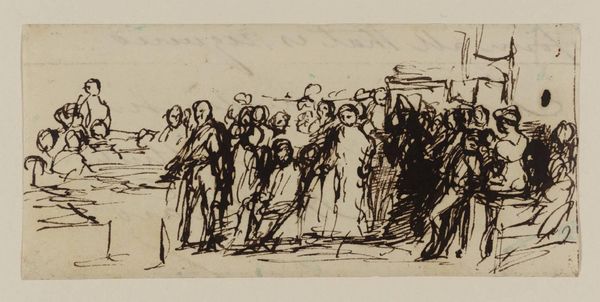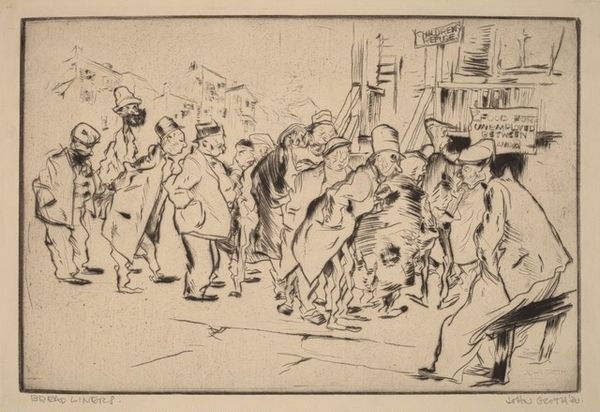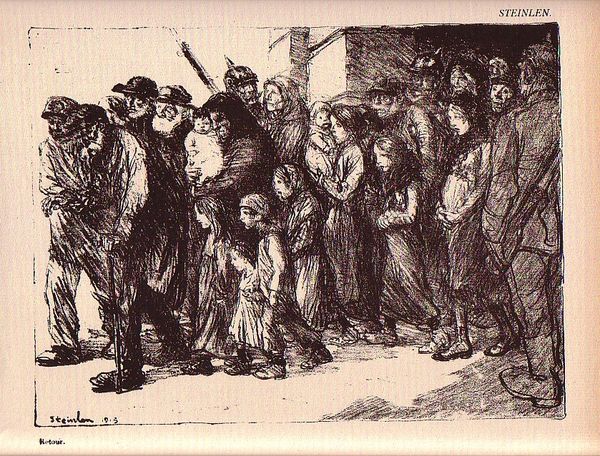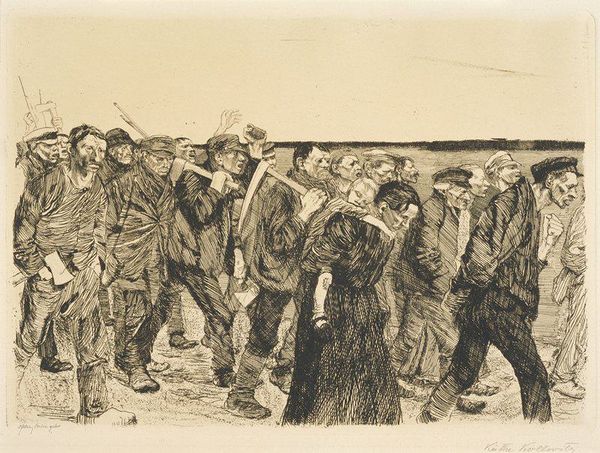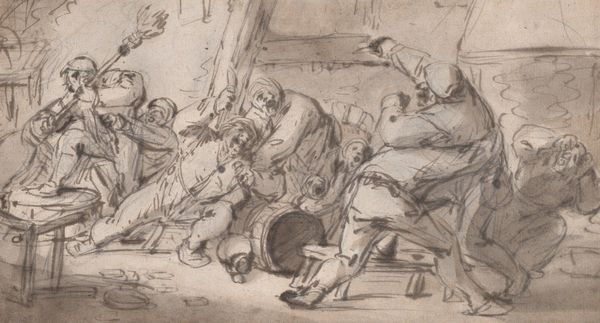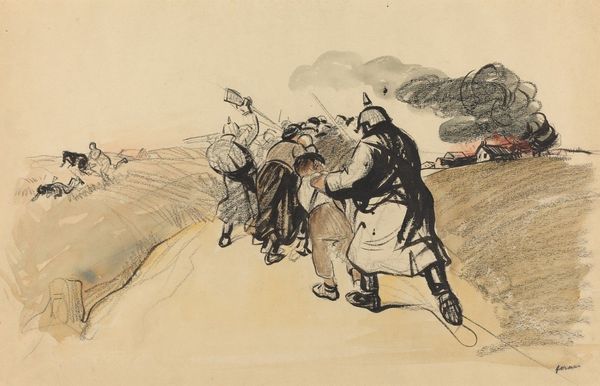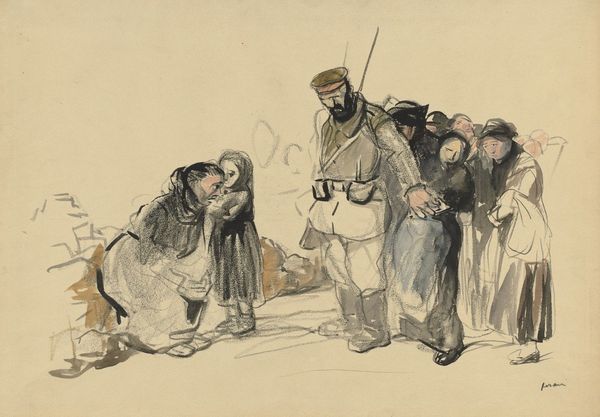
drawing, pencil
#
drawing
#
narrative-art
#
landscape
#
figuration
#
social-realism
#
pencil
#
history-painting
#
modernism
#
realism
Copyright: Public domain
Curator: Here we have Théophile Alexandre Steinlen's "Les Réfugiés de la Meuse," created in 1915, rendered with pencil on paper. It’s a potent image born from the upheaval of World War I. Editor: It’s immediately striking, the sheer mass of people is almost overwhelming. A really dramatic composition and, considering it's just pencil, incredibly textural. What emotions are conjured here for you? Curator: Knowing its historical context, it evokes the stark reality of displacement during wartime. The refugees’ material conditions would have been incredibly difficult. It serves as a testament to the war's impact on everyday lives and the physical toil of survival. Steinlen, rooted in social realism, sought to highlight these often-overlooked stories, wouldn’t you say? Editor: Undeniably, but I also see the dynamic interplay of light and shadow used to amplify the emotion, focusing the eye to movement and drawing your attention to the leading female figure and out towards the crowd to bring you into the feeling of tension in this narrative art. Her open posture against the darkness really defines the center point. Curator: Absolutely. His choice of medium itself, humble pencil, speaks to the immediate availability of materials for capturing these urgent scenes. I’m fascinated by Steinlen’s active engagement with societal issues, using art to critique and raise awareness and it highlights the production constraints inherent in wartime representation, too. Editor: Looking at the structural choices further, it is as if he deliberately skewed the lines toward chaos. Note the layering of figures, each rendered in detail, all jostling and competing for visual space which adds to the painting's disquiet. It makes for a great effect, but were you considering something other than what's on the surface when viewing? Curator: Definitely. Thinking about how prints like these were circulated during the war... they played a crucial role in shaping public opinion. And consider, too, how access to quality paper itself might have been restricted by wartime conditions... each piece, becomes a small victory over logistical constraints. Editor: Ultimately, though, it’s the balance of technique and artistry, wouldn’t you say? His talent as a draftsman is in creating impactful works that endure despite a somber subject matter. Curator: Agreed, a potent blend of art and evidence reflecting human cost and an era of mass mobilisation. Editor: A masterclass in drawing then, regardless of historical background.
Comments
No comments
Be the first to comment and join the conversation on the ultimate creative platform.
